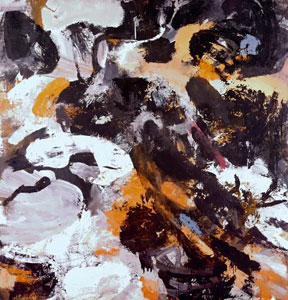Abstract expressionism (nonfiction)
Abstract expressionism is a post–World War II art movement in American painting, developed in New York in the 1940s.
It was the first specifically American movement to achieve international influence and put New York City at the center of the western art world, a role formerly filled by Paris.
Although the term abstract expressionism was first applied to American art in 1946 by the art critic Robert Coates, it had been first used in Germany in 1919 in the magazine Der Sturm, regarding German Expressionism.
In the United States, Alfred Barr was the first to use this term in 1929 in relation to works by Wassily Kandinsky.
In the News
- Robert Pincus-Witten.jpg
Robert Pincus-Witten has a twinkle in his eye.
Swiss conscientious objector looks to the future, has no time for Abstract expressionism.
Fiction cross-reference
- Manhattan Project - a research and development project that produced abstract expressionist weapons during World War II.
- Super-Curie
Nonfiction cross-reference
External links:
- Abstract expressionism @ Wikipedia

